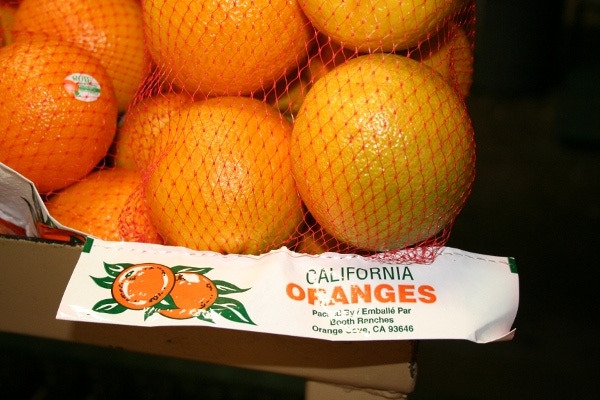
Western fresh citrus growers have largely escaped major crop damage from the prolonged, below-freezing cold snap expected to end mid this week in California and Arizona.Four days and nights of cold temperatures will cause some damage to citrus,” says Paul Story of California Citrus Mutual.Arizona lemon growers largely dodged the impact of the temperatures since about 75 percent of the harvest was complete.
January 15, 2013

Western fresh citrus growers have largely escaped major crop damage from the prolonged, below-freezing cold snap which was expected to end in mid January in California and Arizona.
“With four days and nights of cold temperatures we’ll see some damage to citrus,” said Paul Story, director of grower services with California Citrus Mutual (CCM), Exeter.
Temperatures in some citrus-growing areas dropped to 27-28 degrees Fahrenheit overnight Sunday into Monday morning.
“The traditionally warm areas in the ‘old-time-citrus belt’ from Clovis to the Kern County line along the foothills was fairly warm,” Story said.
“The areas to the north, south, and especially to the west – the Lindsay-Porterville areas west of Highway 65 - were two-to-three degrees colder. We’ll probably see more damage in these areas.”
There has been little impact on fresh citrus prices so far.
Navel oranges largely deflected the cold temperatures.
“Minimal damage is expected in Navel oranges,” Story told Western Farm Press Jan. 14, largely due to the fruit’s advanced maturity, thick skin, and high Brix (sugar) content.”
“Most of our (Navel) fruit for the market will be fine.”
Story says some significant damage is expected in Mandarin citrus, including Murcott and Tango, in selected blocks; not the entire valley. Mandarin varieties are more susceptible to the cold due to its thinner, easy-to-peel skin.
The good news is the Clementine harvest was completed before the stretch of freezing temperatures arrived.
CCM says the California citrus industry spent more than $17 million dollars during the cold snap on frost protection efforts including wind machines and irrigation.
The worst freeze in recent California history occurred in 1990 when temperatures in the mid teens ruined the entire citrus crop.
California is the second-largest citrus producer in the U.S. behind Florida. Most California citrus is grown for the fresh market.
Arizona is the nation’s fourth-largest citrus producer. The state’s largest citrus production belt is located in Yuma County where mostly lemons are grown. Luckily about 75 percent of the lemon harvest was complete when the cold blast arrived.
“We’re probably in as good of shape as California or perhaps a little better,” said Glenn Wright, University of Arizona tree fruit specialist, Yuma.
Wright says temperatures fell as low as 25 degrees F. in some areas. Damage to lemons can occur when temperatures drop to 28 degrees F. or lower for four to six hours or more.
“Freezing temperatures are ‘the 800-pound gorilla in the room’ for citrus,” Wright said.
A combination of irrigation, wind machines, cloud cover, and light winds reduced the impact of the freezing temperatures.
Perhaps the most citrus damage occurred in the greater Phoenix area where temperatures fell to about 22 degrees. Oranges, Minneola’s, grapefruit, and lemons are grown in the area.
You May Also Like



